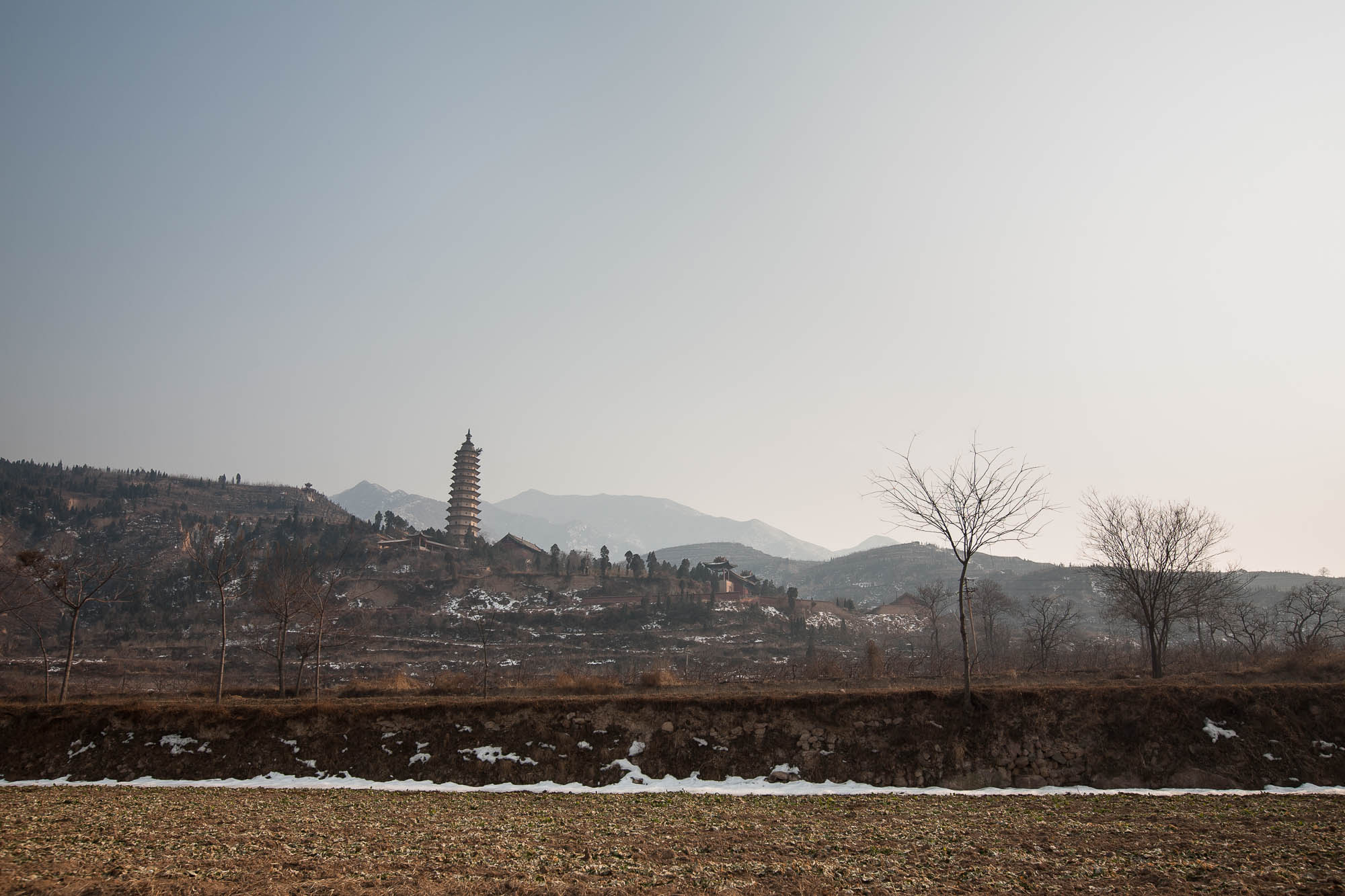afraid of heights
There is an aeroplane on a square in a public park in Yongji:
Obviously, this is a nice place to play with friends when you’re about 10 years old:
I’m 26, so I didn’t play.
Instead I was going to climb yet another pagoda, one that seemed to be leaning slightly to the right:
The afternoon air was mild, not cold, and people were hanging out in front of their doors:
Others were taking walks:
So was I, just taking a walk, aiming at the pagoda I could see in the distance, working my way up through tiny villages where people would say: “Hello!” and then smile, and sometimes laugh.
I passed through my first bamboo grove on this trip:
And then there was the pagoda – it’s called Wangu Temple 万固寺:
I ran into a group of young people at the foot of the pagoda, and we decided to climb up together.
Now I wasn’t expecting much from my previous experiences with pagoda-climbing (history lessons, oversized intruder), but then we arrived at the top:
Amazing.
I was so scared though…
It was like school again – all the other kids were much cooler than me:
I asked the monk downstairs if anybody had ever fallen down from there.
He answered: “Of course not, this pagoda is protected by Buddha.” and smiled.
Well, some parts of this place don’t seem to be protected that well though:
This masterpiece is slowly withering away:
Scientists have tried to conserve it by shielding it off behind glass, but that only led to mold – and thus made things even worse.
Besides all this, there was a building without beams:
Whatever that means: “without beams” – I didn’t understand the architectonic concept behind it.
But it was nice anyways.
On the rest of the way, I noticed some people were desperately trying to clean up the massive remainders of the Spring Festival fireworks:
An orgy of pyromaniacs it must have been.
Later that night when I got into bed and closed my eyes, I got a feeling of panic and realized that actually, today on top of that pagoda, I had been even more afraid than I thought.
I think I’m afraid of heights.















Daniel
Hey Chris,
I’m wasting work hours browsing through your old blog entries (and having a good time).
I can’t resist commenting on the “beamless building” – this is something quite extraordinary in traditional chinese architecture, because most structures would be build with or around strong supporting beams, i.e. thick wooden rods.
The one on your picture, however, is made only from bricks, and that used to be something very special. See also the Beamless Hall in the Summer Palace in Beijing.
Greetings from Oslo,
Daniel
Rohmer
Hi Chris – I’m interested in the Wangu temple beamless hall, too. Daniel from Oslo is right, these halls are really rare, there are only 12 known in the whole of China. Probably the most famous is at Xiantong temple on Mount Wutai, and it was designed by the same architect, the monk Miaofeng (1540-1613). Chris’s photo is the only one I know showing the beam less hall of Wangu temple.
Cheers to you both,
Rohmer from Sydney.
Wei
Wei
Wei
To piggyback on Daniel’s and Rohmer’s comments… I found bucket arch structure (斗拱-dougong-结构) is a fascinating structure in architecture. Even as a Chinese myself, having seen lots of modern replicas of dougong structures domestic and overseas, I still get mesmerised every time when coming across one. They are beautiful inside out. The photo you took of 飞云楼 in a previous post (29 Jan, 2008, if I remember correctly) from the inside showed a really amazing perspective of the structure.
I studied a bit of architecture back at uni. Dougong is a typical and critical structure in ancient Chinese buildings. Its flexibility allows a building to be built to a large size in all dimensions. Particularly back in those days without heavy lifting machineries, Chinese people could build tall pagodas without filling the inside with dirt like how dome structures were built in Europe. Dougong structures also allow big heavy roofs to be held on thin columns since in ancient Chinese buildings, most walls are not load-bearing walls….
Anyway, both this picture and the previous one shot from the inside of the buildings were excellent photographs that really manifests the true beauty of the structure. I do wish to get my hands on one of the prints if available. Let me know.
Great stuff, Chris. 谢谢
Wei
Sorry don’t know how to delete my previous comment.
Bo Zhao
Wow, watched your video for so many years then just realized you’d visited my hometown Yongji. Glad to see you’d visited Wangu Temple and had the chance to go into the pagoda.
Bo from Shanghai, China
Christoph Rehage Post author
Haha, you found this one! I just mentioned it two days ago!
Christoph Rehage Post author
And good luck to Shanghai. 🙂
Bo
Thanks, you take care too.